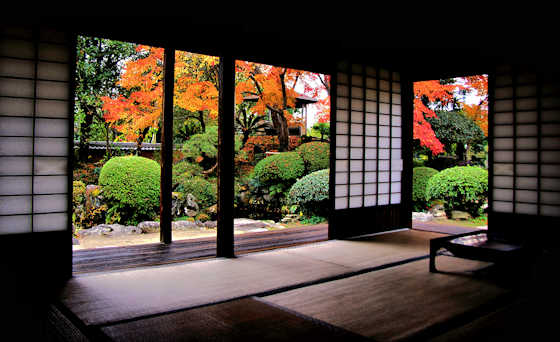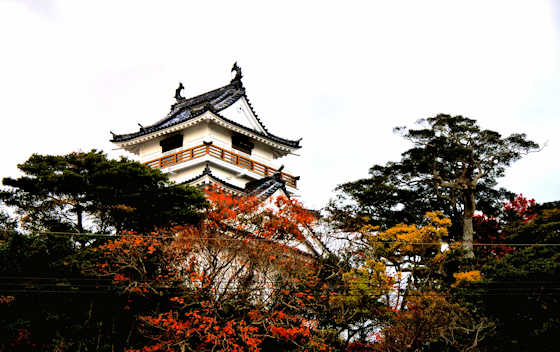Showing posts with label kunisaki fall. Show all posts
Showing posts with label kunisaki fall. Show all posts
Friday, November 27, 2020
Kitsuki Samurai District
Labels:
kitsuki,
kunisaki fall,
preservation district,
samurai
Saturday, October 17, 2020
Samurai Gardens of Kitsuki
Kitsuki's Samurai Gardens
Kitsuki is on the southern edge of the Kunisaki Peninsula, an area I am rather fond of, and these photos were taken on the 4th day of my walk around the peninsula during a November, so the gardens had some good autumn colors.
Labels:
garden,
kitsuki,
kunisaki fall,
samurai
Tuesday, July 28, 2020
Kote-e of Kitsuki
Kote-e is a kind of Japanese art we would call plaster relief. a kote is a kind of narrow trowel used by plasterers, and e means picture or painting, so the literal translation would be "trowel picture".
The art developed in Edo and spread throughout the country, though in some places it is more common. Oita is one such place, and the merchant district of the castle town of Kitsuki has numerous examples.
The designs of the kote-e primarily used symbols to either ward off misfortune or attract good fortune. The kanji for water, used to ward off the danger of fire, is very common nationwide.
Being merchant properties, many of the kote-e in Kitsuki invoke good fortune and the accumulation of wealth. Daikoku and Ebisu, two of the 7 Lucky Gods, are therefore common.
Labels:
dragon,
ebisu,
kitsuki,
kote-e,
kunisaki fall
Saturday, April 18, 2020
Kitsuki Castle the Smallest Castle in Japan
Kitsuki Castle
Claimed to be the smallest castle in Japan, Kitsuki castle is located in northern Kyushu in the town of Kitsuki in Oita.
The keep is a mere three storeys, but the castle does occupy a strategic position on a headland overlooking the river and sea.
A castle was built here in the late 14th Century by Kitsuki Yorinao, though it must be said that the Japanese definition of castle would in many cases be called s small fortification in English.
I like Kitsuki. There is an excellent, well-preserved samurai district near the castle which I will post on later. The current keep is a modern reconstruction though they have made an effort to keep signs of modern times out of the grounds.
Labels:
castle,
kitsuki,
kunisaki fall
Thursday, January 23, 2020
Kitsuki Sunrise
For the 4th day of my walk around the Kunisaki Peninsula in northern Kyushu, I spent all day exploring the castle town of Kitsuki. I spent the night on the south bank of the Yasaka River, and the castle and town were on the north bank, so early in the morning I headed across the bridge at the mouth of the river.
The view out to sea was where the sun had recently risen. I believe it is technically part of Beppu Bay, though it also falls within the boundaries of the Inland Sea. I have a fondness for early morning shots because where I have been living for the past 16 years or so is in a steep, narrow valley so I only get to see the sun in the middle part of the day.
When I lived on top of the world I was able to see the sunrise for a lot more than 300 days a year, and this is probably why I have a penchant for sleeping out on mountaintops here in Japan.
On this particular morning it was quite cloudy, but shafts of golden light were clearly visible......
Labels:
kitsuki,
kunisaki fall,
sunrise
Friday, June 28, 2019
Kunisaki Autumn Walk Day 3
It had taken me two days to walk across the Kunisaki Peninsula from west to east. For this third day my route would be south and then southwest down the coastline. There were a lot of shrines, many of them with banners flying indicating matsuri time..... it was November and the rice had been harvested..
At one shrine a handful of older men and a priest were preparing for some ceremony. Usually just a small group of men, usual village elders, attend these. I have been several times to my local shrine. It is generally agreed it is not for women, though I have never received a satisfactory answer why.
One shrine, Shiraishi, was among the sand dunes. Shiraishi means white stone and refers to a stone pulled up from the sea by a fisherman. It is said the stone was a dragons head, and so the shrine enshrines Ryujin, the undersea Dragon King. People pray here for rain during droughts.
There were a lot of smaller Ebisu Shrines, either in the grounds of bigger shrines, or more often, there own little roadside shrines. All the little villages along this stretch of coast had fishing boats hence Ebisu.
After passing Oita Airport I arrived in the castle town of Kitsuki where I had a room for the night.
Labels:
dragon,
ebisu,
hachidairyu,
kunisaki fall,
Shrine
Thursday, April 4, 2019
Sakurahachiman Shrine, Kunisaki
Late afternoon on Sunday 25th of November, 2012, I arrived in the small port town of Kunisaki on the East coast of the Kunisaki Peninsula. Yesterday I started my walk at Usa Hachimangu on the West side of the peninsula. Usa hachimangu s the origin of the Hachiman cult and head shrine of all Hachiman Shrines in Japan, by one count the most common shrines.
Before heading to my room for the night I visited the Sakurahachiman shrine in the town. Like many Hachiman shrines in north Kyushu it was painted red and white. Not the vermillion of Inari shrines and shrines with an imperial connection, but a darker red. It was founded in 720, when the Hachiman cult was a north Kyushu phenomenon and a few decades before it spread to the capital in Nara and from there throughout Japan.
The shrine was founded by the head priestess of the Usa shrine to pray for success in the battle for control of southern Kyushu between the government forces led by the Yamato against the Hayato. Believed to be an Austronesian speaking people, the Hayato, and the Kumaso people, had long resisted Yamato attempts to control them and outnumbered the Yamato immigrants in south Kyushu.
The war was decisive and the Hayato were forced to settle in what is now the Kyoto area, along with other immigrant clans, and Yamato control now covered all of Kyushu.
Labels:
Hachiman,
komainu,
kunisaki fall,
Shrine
Thursday, September 13, 2018
Kunisaki Yayoi Village
Approaching Kunisaki Town from the west, a few kilometers inland was a reconstruction of a Yayoi Period village. Across the road was a small museum.
Yayoi period dwellings and structures are very much in the style of regions much further south, SE Asia and even pacific islands.....
The location was typical of where the Yayoi settled..... in an alluvial valley where the soil was soft enough to be worked with only wooden tools. Later with the spread of iron they could colonize further inland where the soil was harder and rockier.
Though the Yayoi Period covers many centuries, it is claimed that this site was settled around the 3rd Century.
Labels:
archeology,
kunisaki fall,
Museum,
yayoi
Friday, January 12, 2018
Kumanosha, Kunisaki
As I wander around Japan I notice that some areas seem to have a lot of shrines, and in some areas they are far less common. In the areas with a lot of shrines they usually seem to be well visited. There are plenty of signs of activity, though usually they are empty. In the other areas the shrines seem almost abandoned, with little decoration and grounds not well kept.
The Kunisaki Peninsula is one of the first types of area,... there are a lot of shrines. This one, a Kumanosha, was the fifth one I visited in this morning of my second day walking around the peninsula hunting the fall colors.
According to the signboard it was founded in 725 during the reign of Emperor Shomu. The ony kami listed is Izanami.
The sign also mentioned that in the early Taisho era it was registered as an official village shrine. I suspect this was in response to the governments program of the time that ended up closibg half the shrines in the country. Many more would have been closed but in some areas, like Kunisaki I suspect, the people resisted the governments program and found ways to keep more of their shrines open.
Saturday, June 24, 2017
Senpukuji, Kunisaki
Founded in the 14th Century as a training monastery for Zen monks, Senpukuji is located on the west side of the Kunisaki peninsula.
With advance bookings it is possible to take zazen classes nowadays.
One of the halls is thatched and is registered as an Important Cultural property. The Christian warlord Otomo Sorin burned the temple to the ground in his campaign against Buddhism and Shinto.
There was lots of lovely fall colors when I visited in late November
Labels:
fall,
kunisaki fall,
nio,
soto,
temple
Wednesday, December 14, 2016
Yokote Otoshi-gu
Located out in the rice paddies in Yokote, a village about halfway between Mount Futago and the coast on the east side of the Kunisaki Peninsula, this shrine was a little unusual
The first unusual thing was that there were no stone Nio guardians that are at most of the other shrines I had visited in the area. This might mean that the shrine was established later than when the area flourished as a Shugendo center and most of the shrines, temples, and statuary were made, in the late Heian early kamakura period.
The other unusual thing for me was the kami enshrined here, Otoshi, one of Susano's sons that is associated with rice. I don't remember seeing another Otoshi shrine during the past 2 days here in Kunisaki. It would be interesting to now the story of the shrines founding.
There was unfortunately no signboard at the shrine nor anyone around, so I couldnt find out any more.
Labels:
komainu,
kunisaki fall,
otoshi,
shimenawa
Subscribe to:
Posts (Atom)


































































